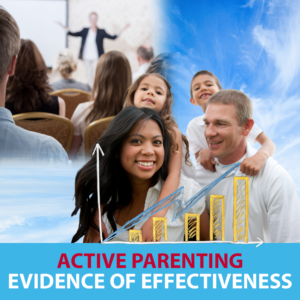
Research Studies
- Results from the latest Active Parenting and Active Parenting of Teens national studies
- More than 35 years’ worth of research to support the efficacy of the Active Parenting model
- Research studies categorized by Active Parenting program
Measurement Tools
- Pre-tests, post-tests, and questionnaires for many Active Parenting programs to help you gauge how much progress the parents in your classes are making
- Class Evaluation Forms to give to parents at the end of class
Announcements
Great news from the California Evidence Based Clearinghouse!
ACTIVE PARENTING PROGRAMS LISTED AS EVIDENCE BASED WITH A SCIENTIFIC RATING
To the encouragement of many AP leaders and sponsors, we are proud to announce that Active Parenting 4th Edition and Active Parenting of Teens are listed on the prestigious CEBC registry (along with Families in Action) with research published in a peer-reviewed journal, having met CEBC’s own rigorous standards.
THE NATIONWIDE STUDY FOR ACTIVE PARENTING: FIRST FIVE YEARS HAS BEEN ACCEPTED FOR PUBLICATION!
Our programs support National Extension Parent Education Model (NEPEM).
Publish your Active Parenting research and we will reimburse you your cost of materials.
Has your organization completed a research study on an Active Parenting Program?
Questions?
Give us a call at 1-800-825-0060 or send an e-mail to cservice@activeparenting.com.

